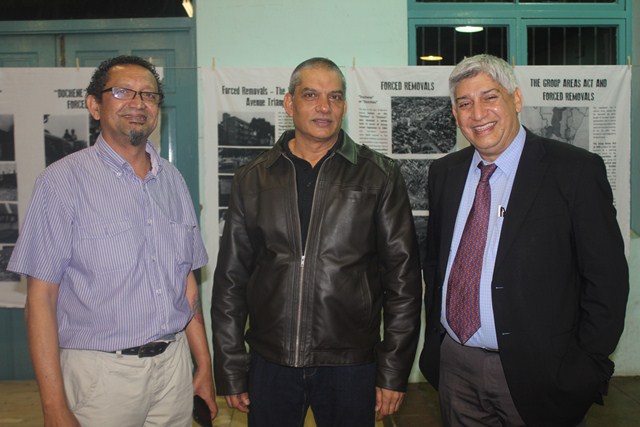Durban University of Technology’s Research of Curries and Surrounds (ROCS) project launched the Dirty Linen exhibition at the Warwick Junction Project Centre as part of the International Union of Architects World Congress of Architects, (UIA) 2014 in Durban, last week.
The Dirty Linen theme consisted of displays of historical images of Durban on cloth to resemble laundry on a line. It highlighted the black urban history and the untold story of the city’s role in racial segregation for more than a century from the 1870s to the 1980s.
The building that was used for the exhibition is one of the few buildings that survived the Group Areas Act and the destruction of the Warwick Avenue Triangle. The building was refurbished in the 1990s and is now called the Warwick Junction Project Centre.
Leonard Rosenberg, DUT Campus Planner and coordinator of the ROCS Research project said, “The UIA Congress that has been going on in Durban fits perfectly with our project because we were so engaged in trying to understand the otherness of this part of Durban so when the congress theme of the Otherwhere came up, this was our chance to show the rest of the world what this place to is all about.”
The exhibition also allowed visitors to tour of the former Durban city council, when it established a workers compound and created a ‘dual town’ which became the ‘non- European’ CBD that was Grey Street and the Warwick Junction area.
The Dirty Linen exhibition was attended by conference delegates, DUT Vice-Chancellor and Principal, Prof Ahmed Bawa as well as Durban residents and students who were keen to learn about Durban’s rich history and how the city had been shaped over the last century.
Dr Sayed Iqbal Mohamed, Chairperson of the Organisation of Civic Rights (OCR, was the guest speaker at the opening of the exhibition. He played a vital role within the Durban Central Ratepayers Association (DCRA) and had successfully stopped evictions in the mid 1980s during the Apartheid era.
“We are still working in the Warwick Junction area with tenants, residents and students. We now have students on the periphery of the Triangle and these students are an important part of our community. Bear in mind that you can stand here now, but a few years ago in the 80s and the 90s you could not walk in this area. But now something else needs to be done in this area and that is redeveloping the place, providing security to the tenants and giving ownership grants,” said Dr Mohamed.
The second project for the congress was a tour called Red Square to Curries Fountain. This was a two-and-a-half hour walking tour to get delegates to understand the socio-political and spatial history of Durban’s city centre.
-Gift Nyamapfene
Pictured: Leonard Rosenberg, DUT Campus Planner and coordinator of the ROCS research project, Dr Sayed Iqbal Mohamed, Chairperson of the Organisation of Civic Rights (OCR) and DUT Vice-Chancellor and Principal, Prof Ahmed Bawa, at the Dirty Linen exhibition at the Warwick Junction Project Centre.


